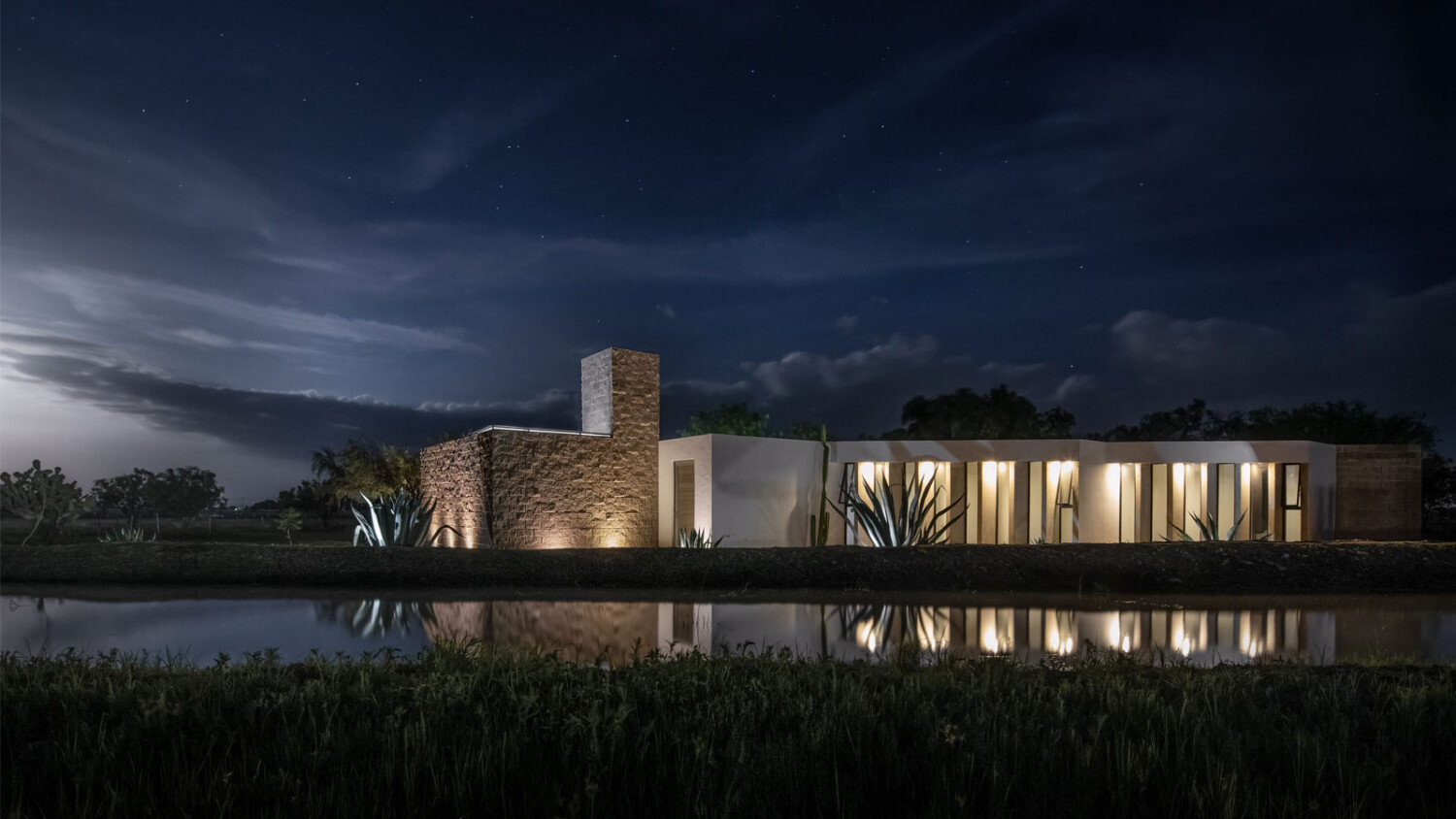Photographing Casa El Llano in Mexico’s Rainy Season With Paulina Ojeda
Today we’re headed to El Llano, Mexico with amazing architectural photographer Paulina Ojeda. Paulina has kindly shared her photographs of Casa El Llano by Vincenzo Design Studio, which she made during Mexico’s rainy season. You’ll find this project is chock full of great light, great shapes, and great dogs!
Paulina starts off, “The project is located outside the city of Aguascalientes, approximately an hour’s drive away. It’s important to note that Aguascalientes experiences quite extreme weather conditions. It can be very dry and warm, but for a couple of months, it receives heavy rainfall, transforming the landscape into a lush, green environment with abundant foliage and ponds in the countryside. This particular time of year was when we decided to conduct the photo session.”
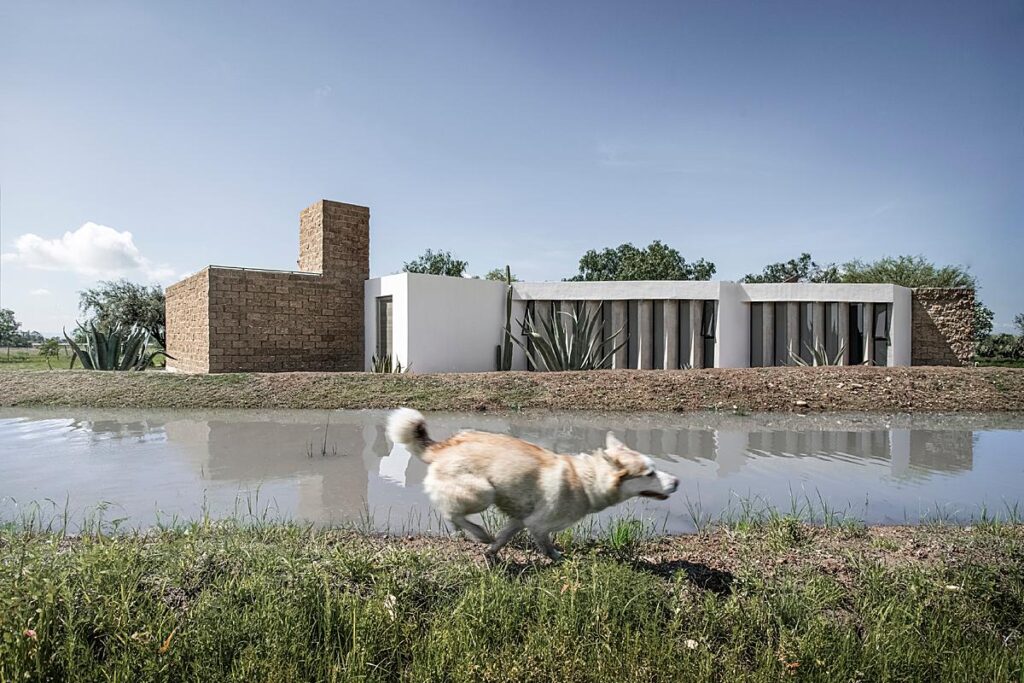
She continues “As you may gather from the pictures, the house is situated on a vast piece of land. Given this setting, and considering that there were many diverse facades to photograph, I needed to capture them from a distance to document them within their context. To be honest, this presented quite a challenge in certain hours. While you can anticipate how the sunlight will interact with the project to some extent, there are always unexpected details that emerge during the process and those moments can be crucial in a couple of spaces / Facades/details that you want to capture but at the end of the day you need to make the decision of which shoot it is more important or coordinate.
On the other hand, this was my first time interacting with so many dogs during the session (there were like 4 of them). They were full of energy and very friendly. My initial thoughts were more like, ‘I’m excited, but this can be chaotic too.’ However, the result is that they bring so much life to the photos and the space.
Related to the previous statement, I’ve often heard that architects prefer to present a pristine space, free of furniture, people, or animals. But increasingly, I’ve been encouraging these types of clients to showcase the space being used. I believe it’s important to view architecture not just as an art object, but as a space that needs and will be inhabited by someone. It’s crucial to understand that this is the essence of architecture – it’s meant to serve and be interacted with by people.”
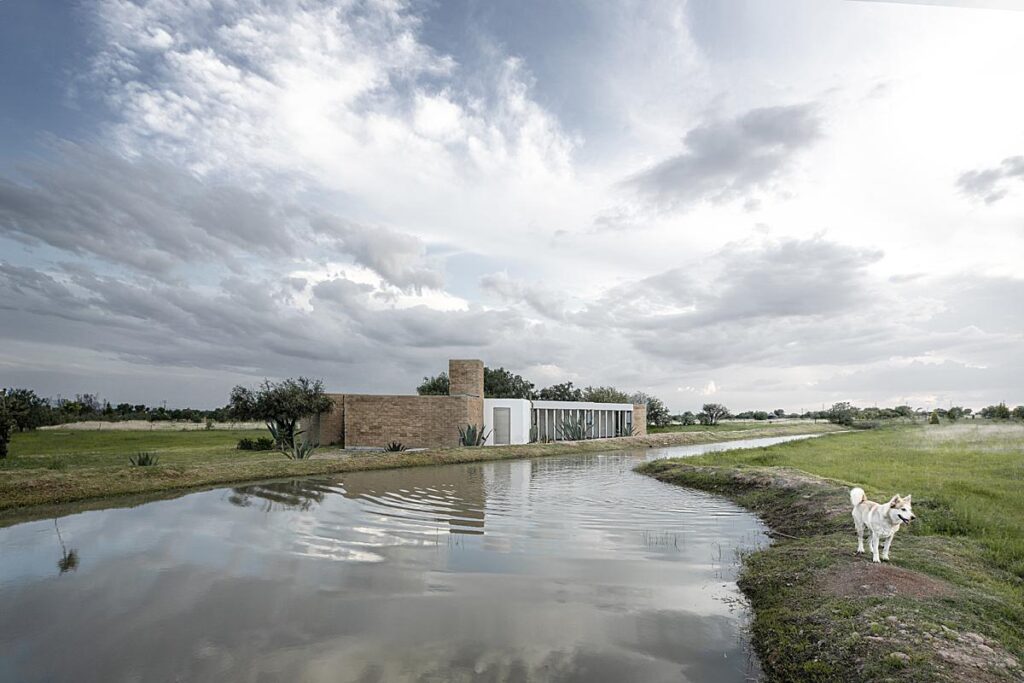
I love the inclusion of the dogs and agree with Pau that it shows the home in use as opposed to just an object. It gives the images character and life while conveying a story and sense of place.
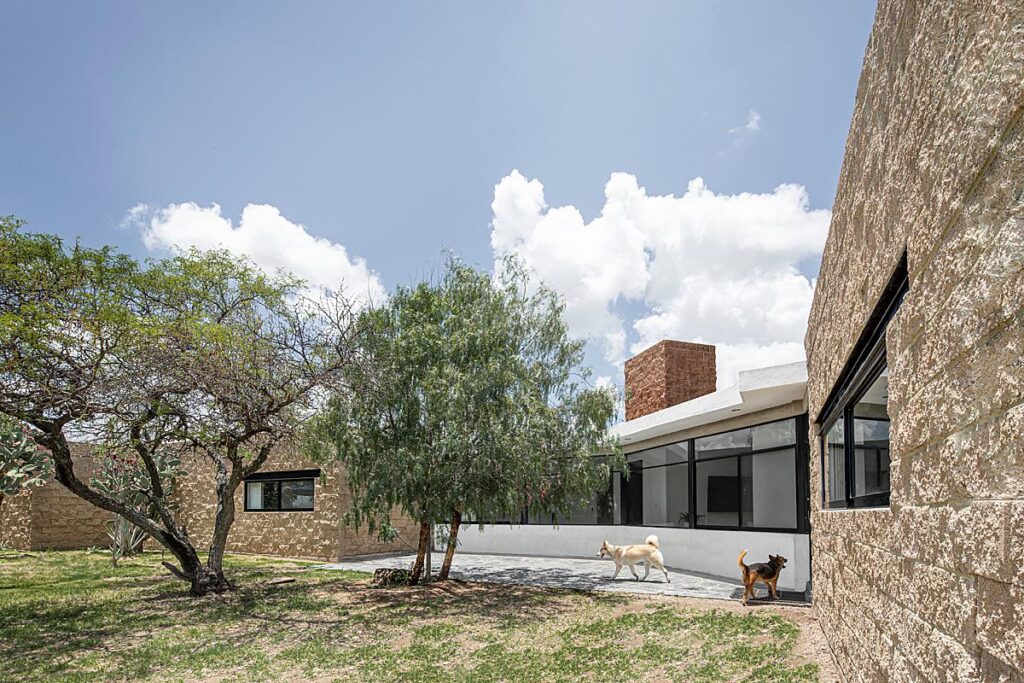
Another thing I love about Paulina’s work is her masterful use of lighting to carve out shapes. Her images are rich with shadows and highlights, helping us determine depth and dimensionality in this 2D medium.
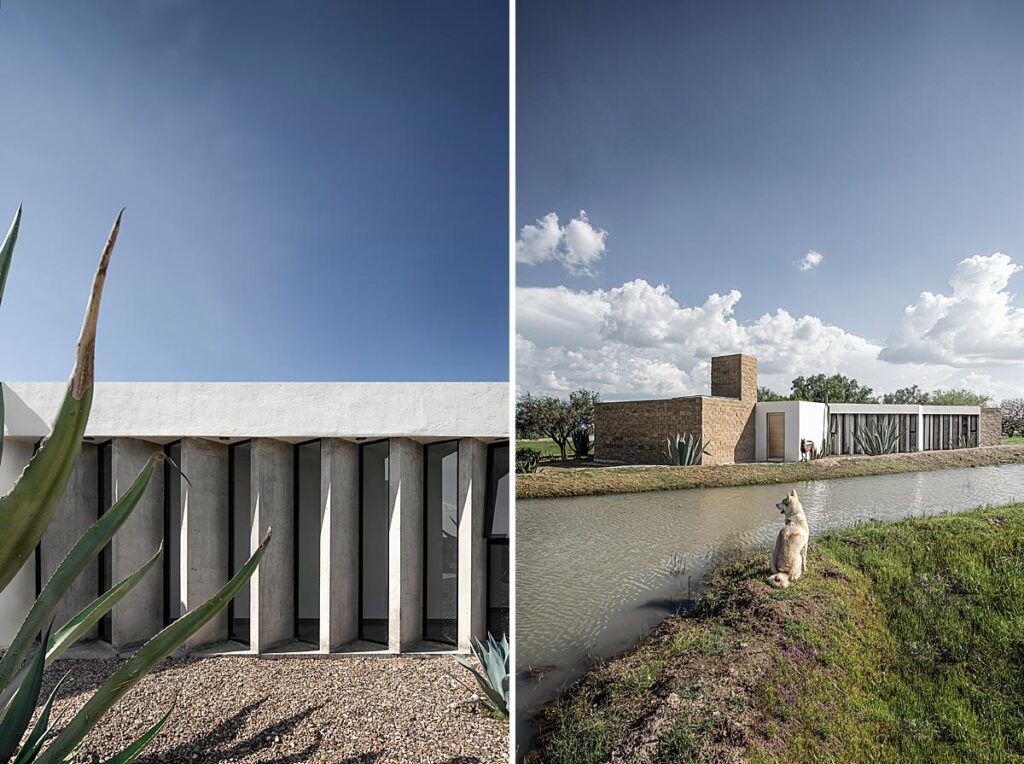
Pau shares a bit about her relationship with her client and a look into the collaborative process between them. She says “I had an existing working relationship with my client Vincenzo. We collaborated on a couple of his projects before this one, so we had a good understanding of our working dynamic.
What I particularly value when we collaborate is his presence during our sessions. He isn’t there merely to oversee or direct; instead, he accompanies me and offers assistance if I require support with tasks or encounter project-related issues. More importantly, he provides excellent companionship and respects my need for space and time during our sessions.
During the sessions, we ended up talking about all sorts of stuff. Of course, we start with the project, but our conversations often drift into topics like culture, society, or just everyday things. It adds depth to our experience in the space and lets us get a more honest way to experience the time in the project.
In reflection, this entire experience reminds me of a quote from the Mexican architect Mijares Bracho, who stated: ‘My work and my thoughts encompass not only what I have produced but also what I have observed, what I have attracted, and what I have rejected. They represent my teachers, my students, and my friends.’
Ultimately, these situations and conversations enhance our experiences, influencing our approach and development of our work.”
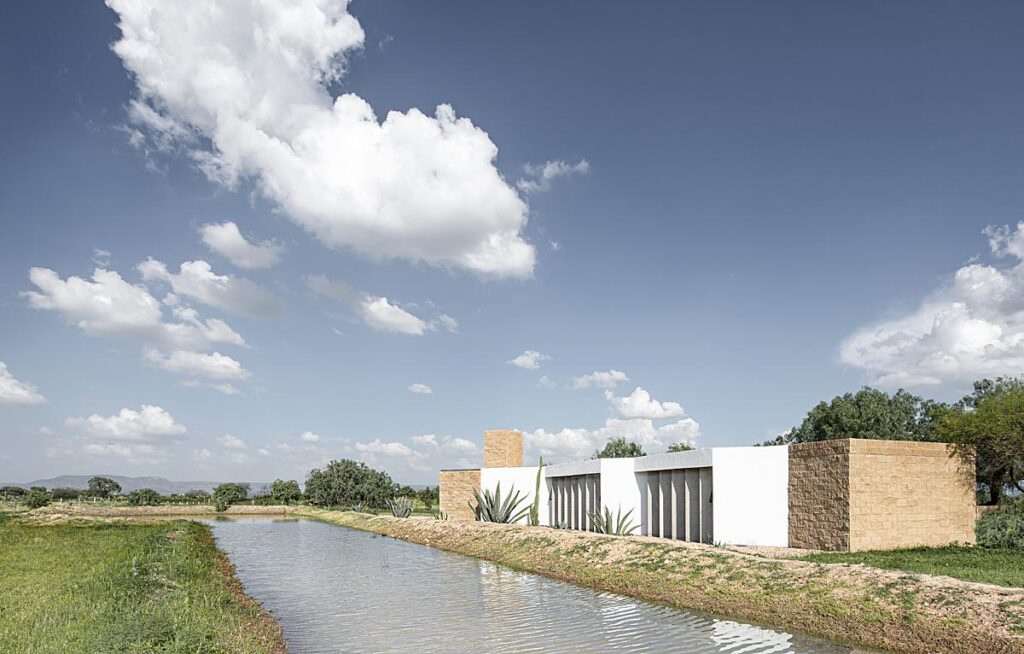
In the dry garden at Casa El Llano are plenty of agaves and magueys. I love the way Paulina takes the time to photograph them while taking the exterior shots…
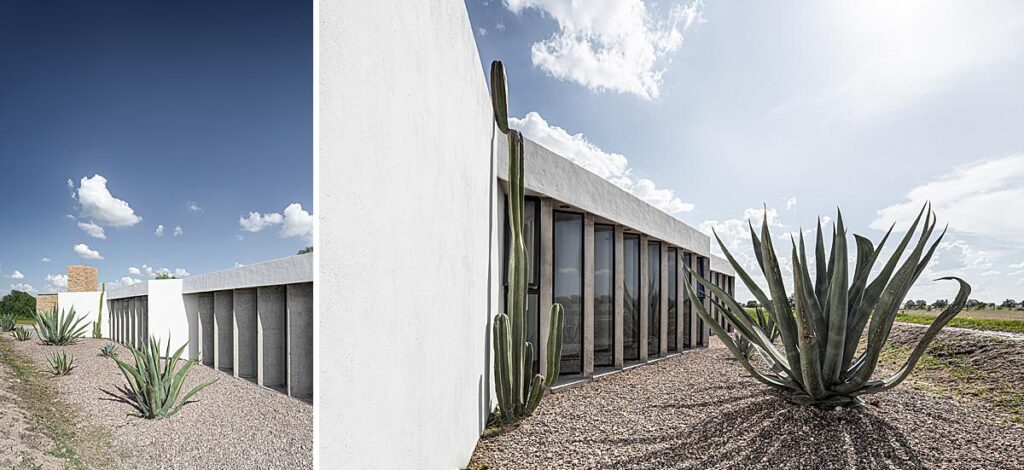
…and then shows us a glimpse of them below. It helps anchor us in the scene and understand the layout of the property.
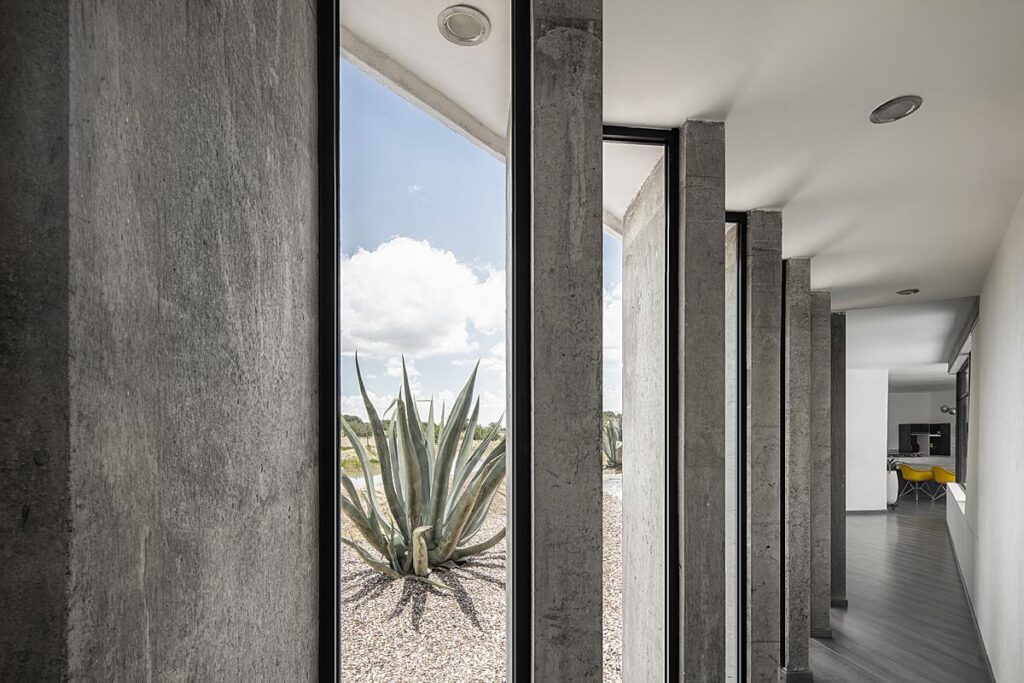
According to Vincenzo Design, “All the spaces of the house look towards the pre-existing tree line made up of mesquites, huisache, and Peruvian pepper trees.” Pau demonstrates this by including a bit of foliage peeking into the frame.
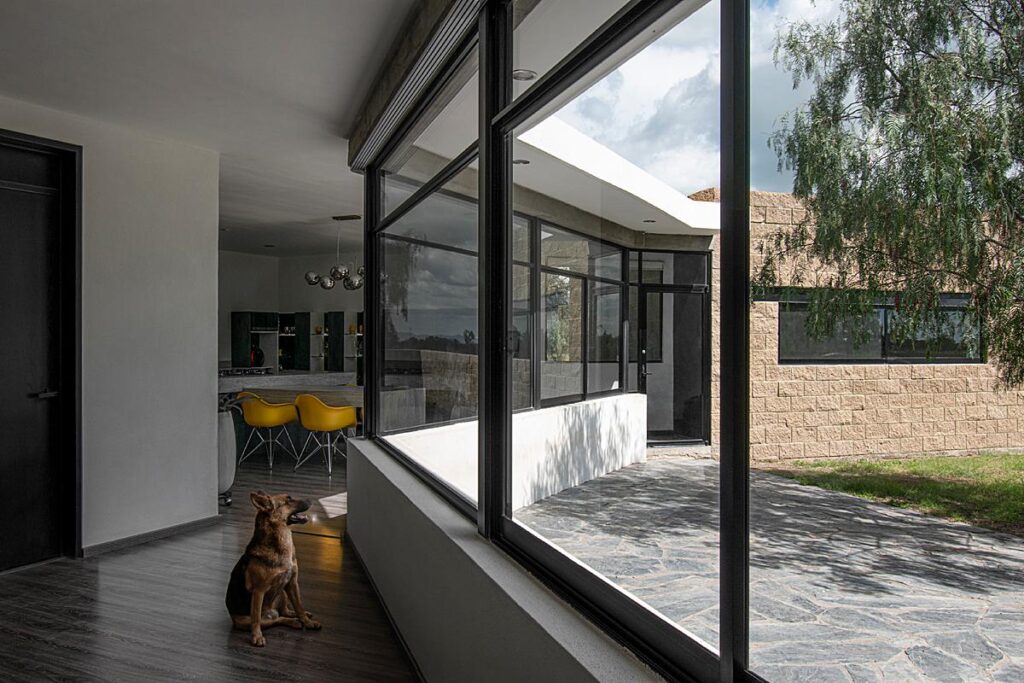
I am partial to her exterior photos on this project, but do love the interiors as well. Simple, restrained post-processing keeps things feeling tidy but real. On the right, a careful composition creates a rhythm that carries our eyes throughout the frame.
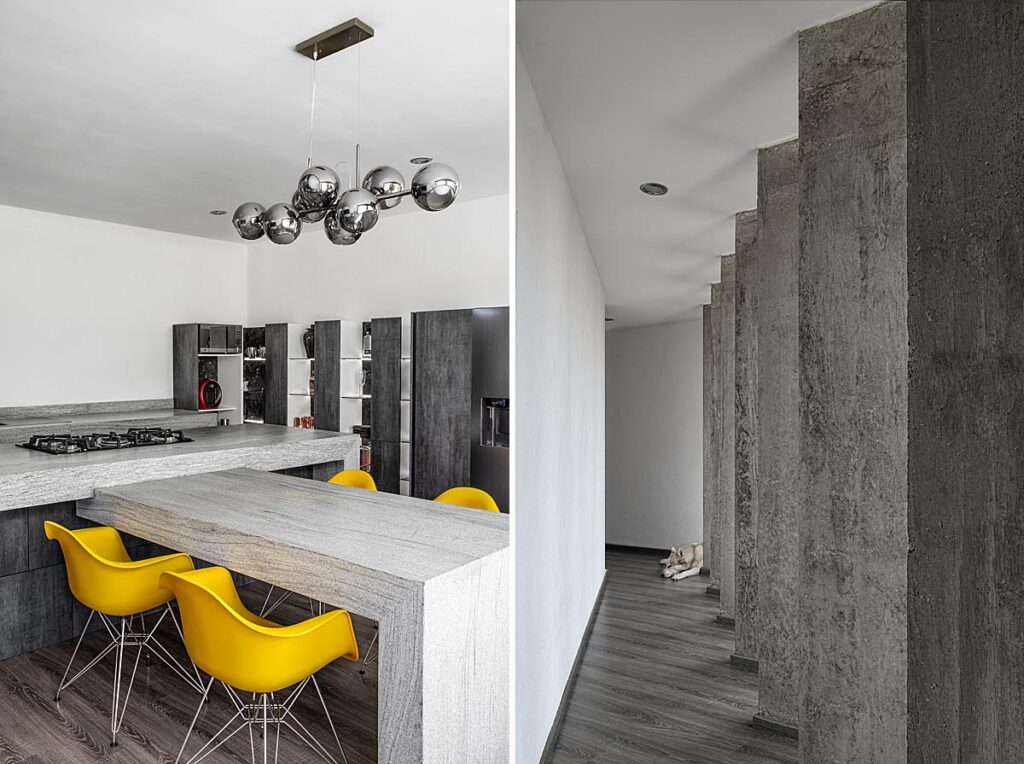
Pau comments on her favorite image from the series, saying “I believe the most special moment for me was the photo taken with a wide-open perspective, where you can see the interaction with the beautiful moon that unexpectedly appeared on that day. Honestly, that wasn’t part of the plan. In the end, these kinds of surprises make the entire session very meaningful for me.
I’ve heard that many colleagues prefer to have most, if not everything, carefully controlled. I must confess that I sometimes like to avoid planning every detail and make the best of the situation, whatever that may entail. It can be more challenging at times, but in many cases, those uncontrolled elements add a unique touch and, in many cases, a more genuine way to perceive the uniqueness of each project and the context they are in.”
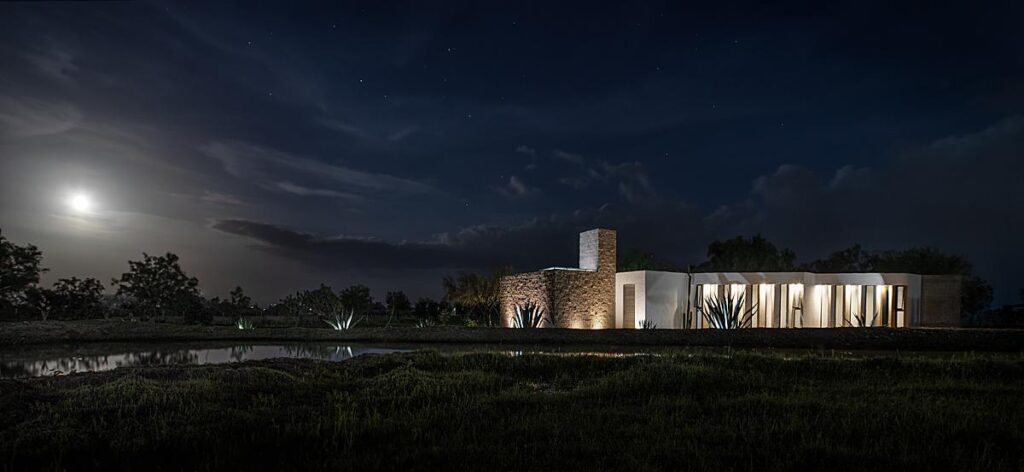
We’ll close this out with advice from Paulina to her peers. She says “I believe that nowadays, with the convenience of digital cameras, it’s easy to fall into the trap of trying to capture everything, focusing on every single detail. However, in retrospect, I’ve come to realize that this can sometimes make us lose sight of what we genuinely want to convey and communicate about the place we are photographing.
It may sound a bit cliché, but I think it’s essential to take a step back, immerse ourselves in the space, go for a walk, and sincerely reflect on the essential message we intend to convey. I believe that architectural photography serves as a reminder that spaces possess their unique essence in various ways, and it’s crucial to communicate that distinctiveness and the emotions and interactions they evoke.
It reminds me of Vincenzo’s approach to work. To provide some context, he runs a small design studio, and rather than seeing this as a limitation, I view it as an adjective that describes his working style. He prefers the idea of working just on a few projects simultaneously, allowing him to dedicate his time, mind, and effort fully to each one.
I often think about this idea of rushing to produce things, focusing on quantity over quality. In the past year, I’ve found it important to pause and reflect on how we’re all caught up in the rush, the pressure to be fast and always available. Instead of going for quantity, I believe it’s more meaningful to focus on producing high-quality work that aligns with our own definitions of success. It definitely depends on each person’s unique life, but I think it’s an important thought to keep in mind to create quality and, most importantly, meaningful work.
I really believe that taking these pauses can help you find your own voice in photography. When you step back and catch your breath, you get a chance to think about what’s important to you and what you want to say through your photos. It’s like discovering more about yourself and what matters most in your photography. You can then express these values, stories, or viewpoints in an honest and genuine way through your pictures.”
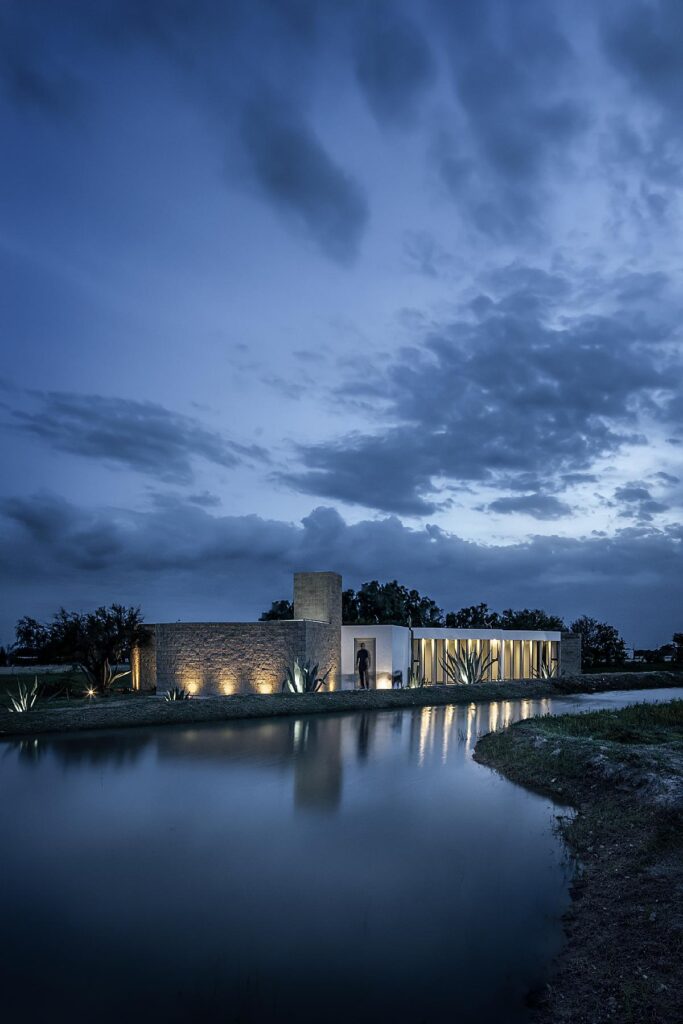
A gigantic thank you to Paulina for sharing this project and a bit of its backstory with us. Be sure to pop by Pau’s Instagram @apau_ojeda to see more of her brilliant work!
If you have a project you’d like to be considered for Project of the Week, you can submit it here.
